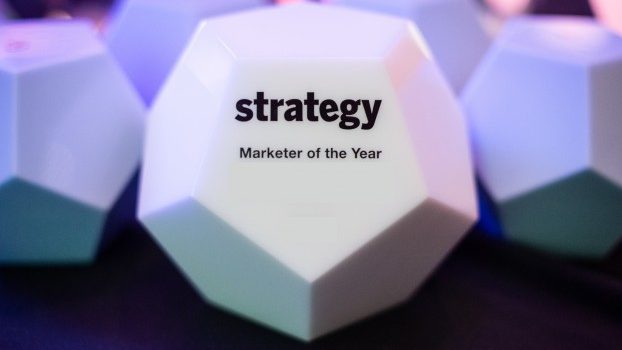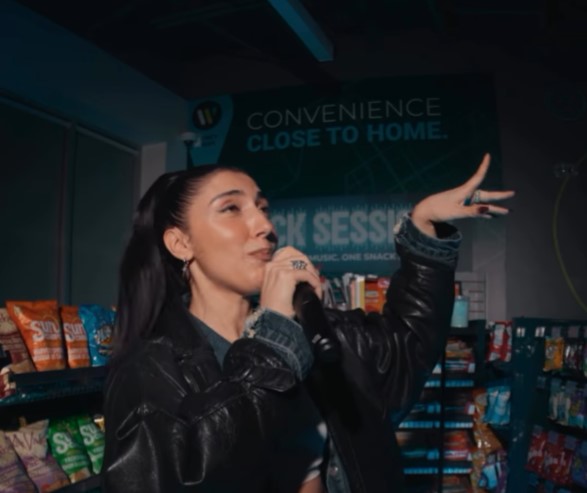This week, strategy is rolling out profiles of the 2020 Brands of the Year. To read about the long-term plans and build-building strategies behind the rest of this year’s winners, click here.
This story originally appeared in the Nov/Dec 2020 issue of strategy.
Lululemon was training for the marathon no one anticipated.
In April 2019, the Vancouver-based apparel retailer unveiled a five-year plan under CEO Calvin McDonald aimed at doubling its digital and menswear revenues and quadrupling its international revenues by 2023. Success, McDonald said, would rest on a “Power of Three” growth strategy: driving product innovation, expanding deeper into new markets, and creating more omnichannel experiences.
Fast-forward to this year, and the 2020 Brand of the Year has so far overcome the worst of the COVID-19 pandemic – reporting a 2% net revenue increase during Q2 2020 – by sticking to the pillars of its long-term strategy. Having doubled down in the face of adversity – like a runner sprinting the last 100 metres – it may even emerge stronger and more agile, a frontrunner in the race for the loyalty of the athleisure-obsessed.
The 20-year-old retailer has historically thrived on a hyper-local grassroots marketing approach. It has actively avoided tactics employed by competitors in sports apparel, with their mass advertising and celebrity endorsements. Instead, it engages with consumers through more than 2,000 global brand ambassadors, who teach classes and host events in their communities, sporting Lulu gear.
“Lululemon was founded on a community-led model and our culture is grounded in authentic human connection,” says Nikki Neuburger (pictured above), a former global marketer at Uber Eats and global VP for Nike Running who became Lululemon’s first chief brand officer in January. “This continues to be a unique differentiator for our brand.”
A major challenge arose, however, with the onset of the COVID-19 pandemic, which temporarily shuttered stores and studios across the globe – starting in Asia (where the company has been aggressively expanding), then later in Europe and North America. In many regions, the crisis put a halt to ambassador events. But, thanks to years of community building, Lululemon was in a favourable position when the time came to shift to a virtual world.
“We were already in the [process] of elevating our digital offerings to create more guest-centric omni-experiences, but the pandemic increased and accelerated digital engagement across the board,” says Neuburger. “In the absence of in-person connections, we saw an opportunity to foster a deeper social community.”
During the pandemic, Lululemon launched Community Carries On, an online hub featuring free ambassador-led workouts and mindfulness practices; similar content was shared on YouTube and IGTV, helping customers connect with ambassadors online and through social. It also introduced a “Move & Stay Connected Challenge,” where 300,000 people tracked their workouts together using the exercise tracking app Strava. And it’s annual SeaWheeze Half Marathon, now in its tenth year, went virtual, attracting 23,000 participants from 100 different countries.
In recent years, as Lululemon grew into more of an experiential brand, it looked to utilize bricks-and-mortar retail as a focal point of its community-based strategy, with stores serving as “community hubs.” Retail expansion, both at home and abroad, has also been central to helping the company achieve its 2023 growth targets.
The clearest articulation of that vision was the opening of a sprawling 20,000-square-foot megastore in Chicago last summer, which Celeste Burgoyne, EVP of the Americas and global guest innovation, described to investors as the “physical manifestation of the heart and soul of Lululemon.”
On top of offering an elevated shopping experience, the store features a studio space for fitness classes and meditation, as well as a restaurant that serves an array of smoothies and salads. At the time of the opening, the store was home to 45 local brand ambassadors – far more than the typical four to eight found at its other locations. The company opened its second experiential store in Minnesota in November, and while COVID has stalled a further roll-out, the company said the concept could one day account for 10% of its stores.
Last year, Lululemon used its Chicago location as the latest test store for its new loyalty program. First piloted in Edmonton in 2019, the membership program is one of the many ways Lululemon is developing stronger relationships with customers. For $168 per year, members gain access to events and classes (online or in-person, where available) and first dibs on new and exclusive products, among other perks. This year, the test program will return to Edmonton and launch in Toronto for the first time.
In Chicago, the test yielded positive results: not only did the brand hit its sign-up goal within one month, but roughly one-third of members participated in ambassador-led classes, 90% of them for the first time. The frequency of store visits from medium- and high-value customers also increased significantly.
In addition to its loyalty and ambassador programs, Lululemon gained another entry point into consumers’ homes through the $500 million acquisition of at-home fitness company Mirror in July 2020. Neuburger says Mirror will play a key role in bolstering the company’s digital ecosystem by creating “immersive and personal in-home sweat and mindfulness” experiences. While Mirror is not yet available in Canada, users in the U.S. have access to weekly live classes, thousands of on-demand workouts, and one-on-one personal training. Instructors already wear Lulu apparel, and the retailer has hinted at one day making their outfits available for purchase directly through the platform.
While Lululemon has, to an extent, benefitted from pandemic fashion trends – as consumers, holed up at home, seek out leggings, loungewear and other comfier WFH attire – its success can also be attributed to investments it made during the outbreak to meet customers where they felt most comfortable shopping.
Unable to offer personalized recommendations in store, the brand launched personal virtual shopping and concierge appointments with “digital educators” over video chat. To help meet growing demand online, it fast-tracked investments in digital initiatives that were planned to roll out over the next two years. For instance, the retailer introduced curbside pick-up and, once stores reopened, launched a virtual waitlist that informs shoppers by text when it’s their turn to enter the store, helping them avoid lineups. Throughout August alone, nearly 400,000 customers made use of that offering.
These investments helped shelter Lululemon from the COVID-19 storm. While the company’s overall revenue grew only 2% for the quarter ending Aug. 2 – a result of temporary store closures, reduced operating hours and limited in-store occupancy levels during the period – a whopping 61% of overall revenue came from ecommerce sales, which grew nearly 25% from the year prior. Now, whether online demand subsides or remains strong post-COVID-19, the brand finds itself in a much stronger position to deliver an omnichannel experience.
Meanwhile, on the marketing front, there are signs the brand is beginning to outgrow its grassroots approach. In 2017, it launched its first global campaign (“This Is Yoga”) with assistance from Vice’s global creative agency, Virtue Worldwide. The campaign – its first to appear on mass channels – focused on how the tenets of yoga, such as self-discovery, discipline and trust, can help people succeed in other aspects of their lives. [After this story went to press, it was reported that Lululemon has picked Droga5 New York as its new creative AOY, with plans to launch a new platform in 2021]. And it now counts several globally recognizable athletes on its roster, after having hired NHL quarterback Nick Foles as its first “global brand ambassador” for Lululemon Men in March 2019.
“As we look to the future, our aim is to innovate more ways for new and existing guests to engage with us and one another… through a seamless, flexible omni ecosystem,” Neuburger says. “It creates a great deal of whitespace in the way we can show up for our guests.”

























